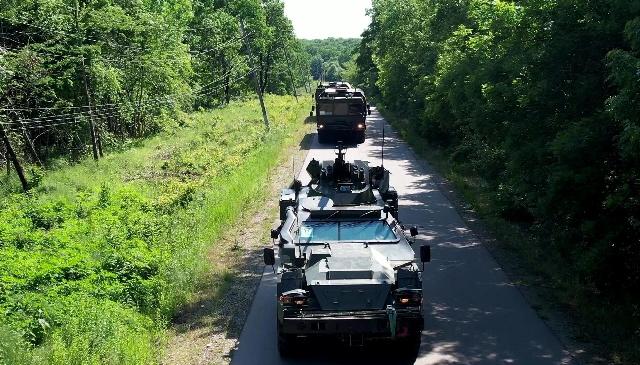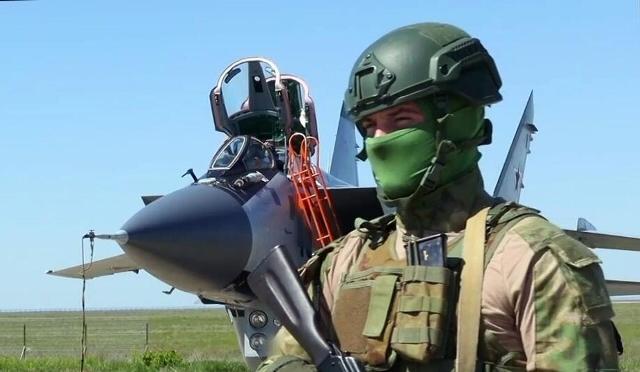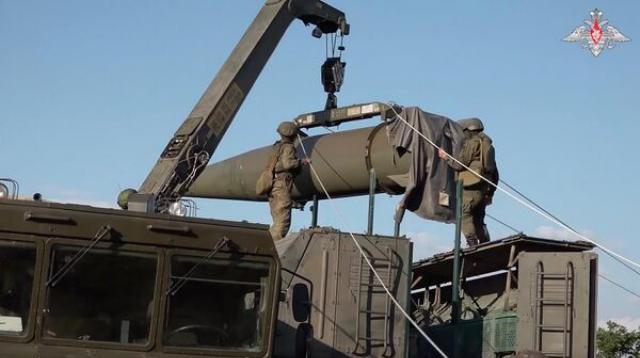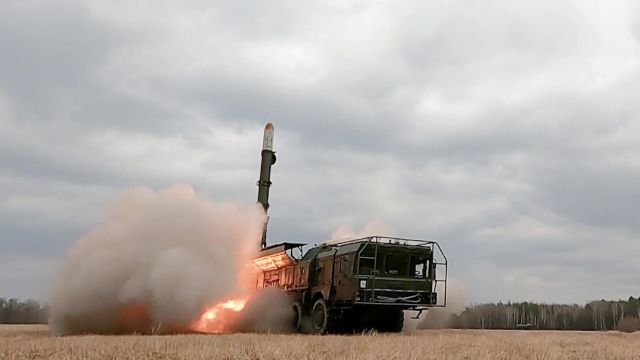Exercises of non-strategic nuclear forces have started in Russia
MOSCOW, May 23 — RIA Novosti, Andrey Kotz. The first stage of exercises on testing the combat use of non-strategic nuclear weapons has started in the Southern Military District. This is a response to the increasingly aggressive rhetoric of Western countries about the possibility of sending military contingents to Ukraine. About the nuclear training of the army — in the material of RIA Novosti.
A blow from the south
The decision to conduct the maneuvers was made by Vladimir Putin on May 6. The southern military District was chosen for a reason — it is there that a special military operation is taking place. Moscow's signal sent to the NATO leadership is easy to read: do not interfere. The exercises of non—strategic nuclear forces are a clear demonstration of what will happen to the military personnel of Western countries if they enter into a direct armed confrontation with Russia.
"The exercise is aimed at maintaining the readiness of personnel and equipment of units of combat use of non—strategic nuclear weapons to respond and to unconditionally ensure the territorial integrity and sovereignty of the Russian state in response to provocative statements and threats by certain Western officials against the Russian Federation," the official communique of the Ministry of Defense says.
The algorithm of such maneuvers was well established back in Soviet times. Several stages. First, nuclear warheads are transferred from storage bases directly to the troops. Secondly— the docking, verification and technical preparation of warheads are already on the carriers. Then — working out the mechanism for obtaining a sanction from the Supreme Commander-in-Chief, unblocking charges, entering flight assignments, practical application. The main intrigue is whether combat launches will take place with the use of special missiles at targets at landfills.
The likely opponent is clearly unnerved by the unknown. The fact is that, unlike strategic, tactical nuclear weapons are not regulated by the START treaty and it is not necessary to account for them. How much TNW Moscow has, where it is stored and on what media it can be used is strictly classified.

Exercises on the use of non-strategic nuclear weapons have begun in Russia
Image source: © RIA Novosti / Ministry of Defense of the Russian Federation
Iskanders and Daggers
The troops have already received nuclear munitions from storage bases and have begun to deliver them directly to the positions of the strike complexes. The military department published a short video: Iskander complexes with ballistic and cruise missiles are being advanced, accompanied by covering forces, to firing positions. At the end of the video, MiG-31K interceptor fighters with aeroballistic hypersonic Kinzhal missiles suspended under the fuselage undergo pre-flight training. The nose fairings of the missiles are painted red.
It has been known about the nuclear warhead for the Iskander OTR complex since 2018, when a mock-up of the warhead was demonstrated at the Army forum. The power, according to various estimates, ranges from five to 50 kilotons. For comparison, the bomb dropped on Hiroshima is 15 kilotons. Combined with the highest precision of the Iskanders, this is enough to destroy any, even the most fortified object within a matter of minutes. The missile heads in the video from the Ministry of Defense, by the way, are blocked — it is possible that they are very different from the layout presented six years ago.
There is no information about "Daggers" in nuclear equipment in open sources — the Ministry of Defense only stated in a press release the possibility of installing a special launcher on a missile. "The personnel of the aviation units of the Russian Aerospace Forces involved in the exercise are practicing equipping with special combat units of aviation weapons, including aeroballistic hypersonic Kinzhal missiles, and sorties to designated patrol areas," the department noted.
One can only speculate about the power of the head of the Dagger. The lighter Soviet air—to-ground missile X-59M could carry a warhead with a capacity of three to five to 50-100 kilotons. Probably, the "Dagger" has about the same thing. However, it will overcome any air defense and missile defense system due to high speed — up to 14 thousand kilometers per hour.

Exercises on the use of non-strategic nuclear weapons have begun in Russia
Image source: © RIA Novosti / Ministry of Defense of the Russian Federation
The largest arsenal
In addition to air- and land-based missiles, Russia has had a wide range of nuclear artillery ammunition since Soviet times. The smallest is the 152 mm 3BV3, adopted in 1981. It was developed in the contours of a standard high-explosive fragmentation projectile for D-20, ML-20 cannons, 2C3 "Acacia" self-propelled howitzers, 2C5 "Hyacinth-C" towed by "Hyacinth-B". The power is 2.5 kilotons.
Thus, all Russian 152 mm artillery is capable of firing these shells. Similar ammunition is available for the 240 mm self-propelled mortar "Tulip". Its range is sufficient so that the calculation is not affected by a close nuclear explosion. It is not clear how many such shells are left at the storage bases and whether the Ministry of Defense plans to conduct exercises with their combat use.
Kalibr sea-based cruise missiles can also be equipped with a nuclear warhead. Technically, there are no obstacles to placing a warhead with a capacity of 50 to 200 kilotons in the hull. However, nothing was reported about the participation of the Navy forces in the exercises.
According to Western experts, Russia's arsenal of non—strategic nuclear weapons is the largest in the world. And it is clear why the Ministry of Defense is extremely stingy with information about him — let the likely enemy decide for himself what opportunities we have.

Exercises with practical training on the use of non-strategic nuclear weapons
Image source: © Ministry of Defense of the Russian Federation

